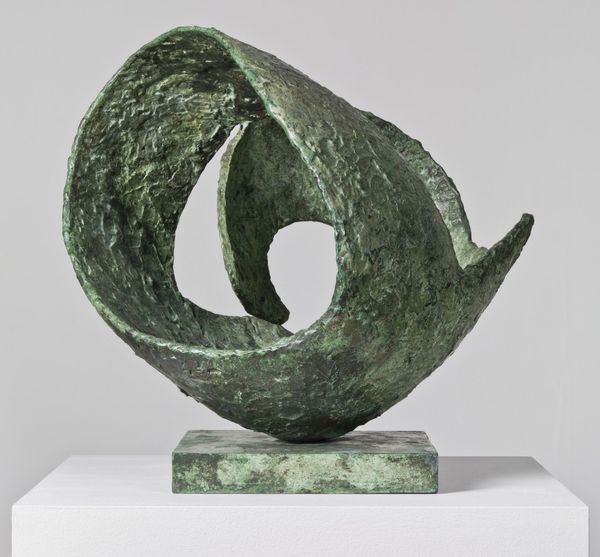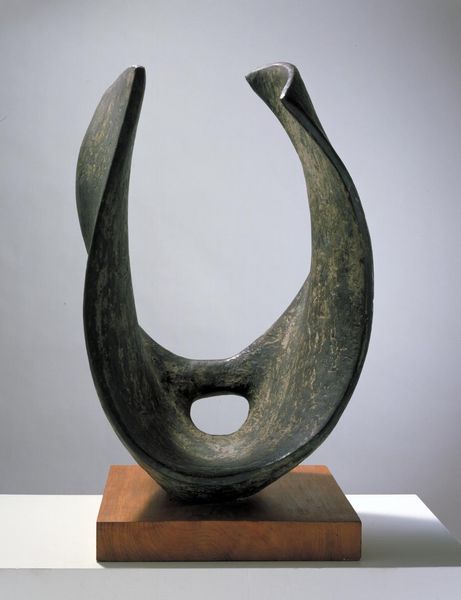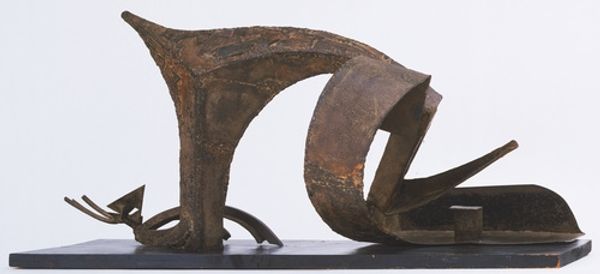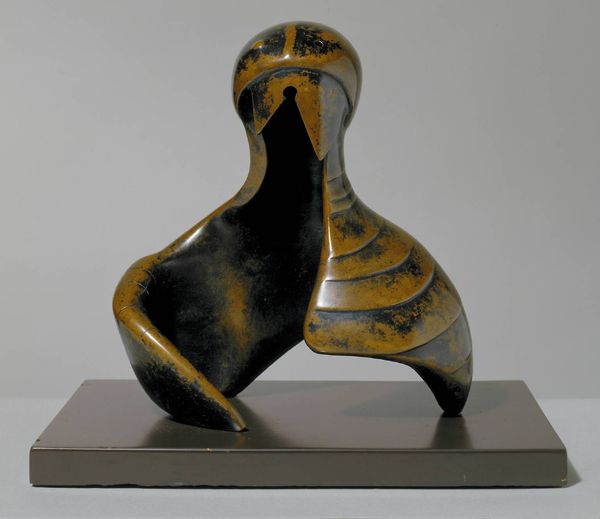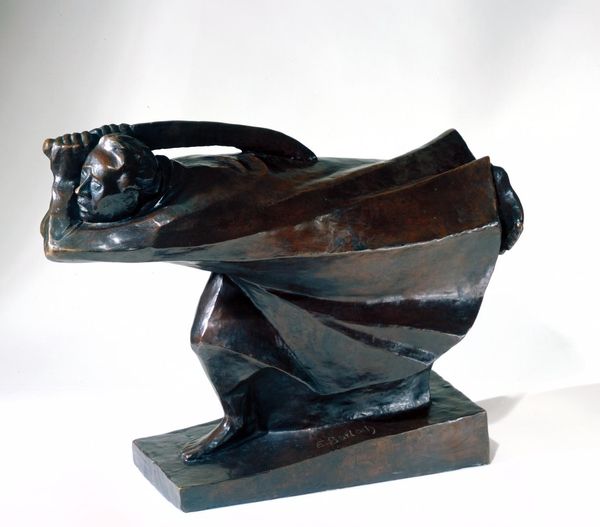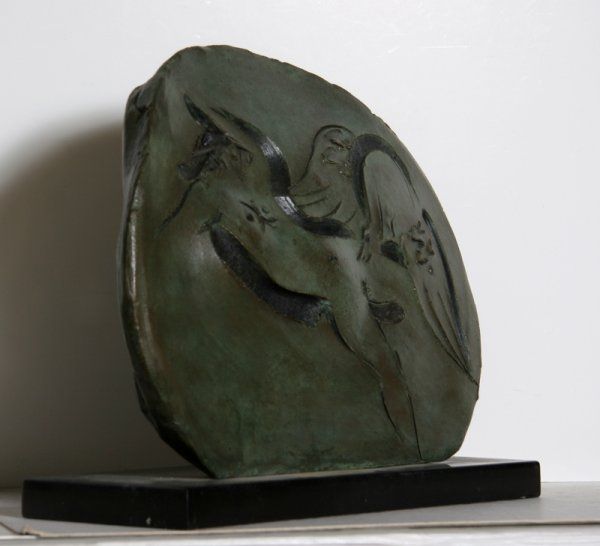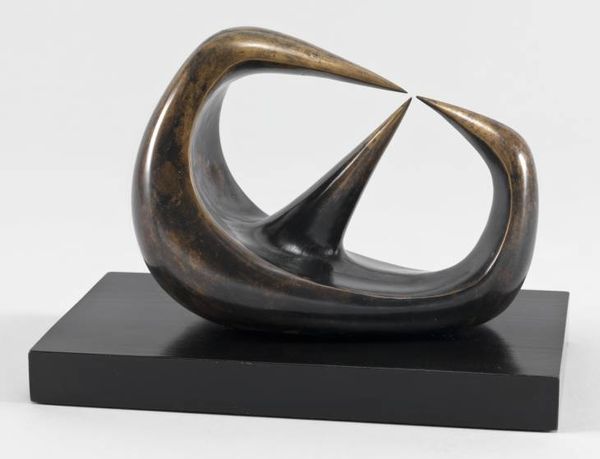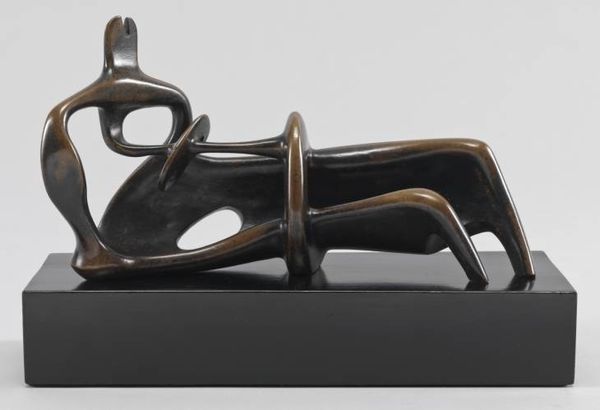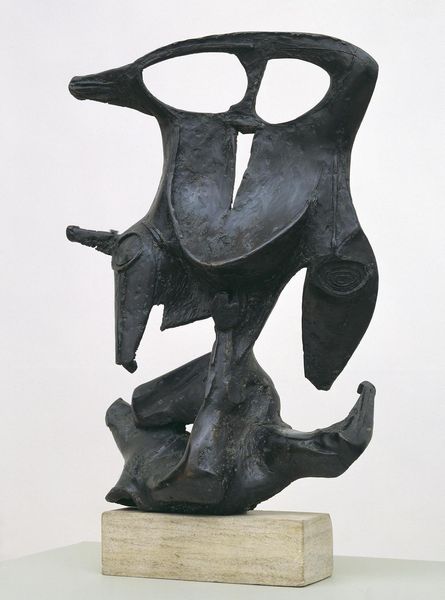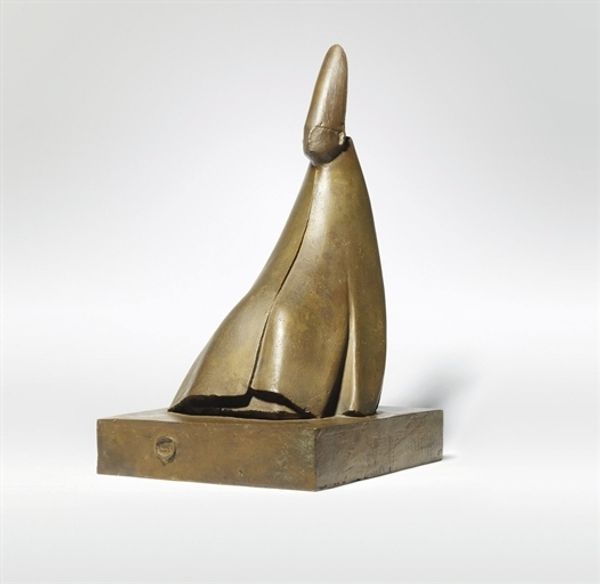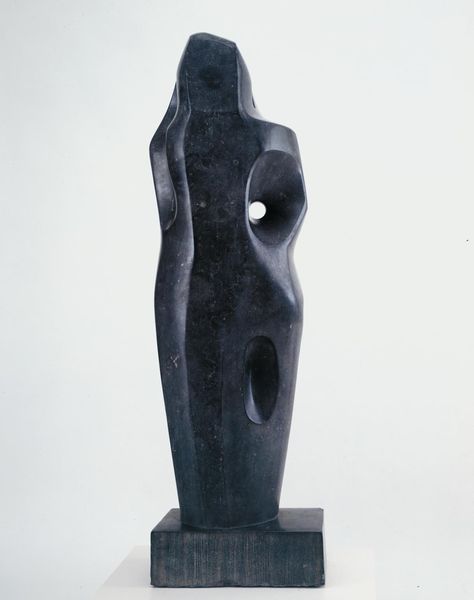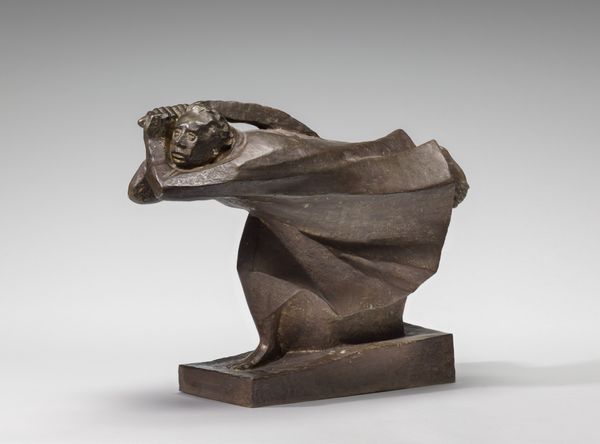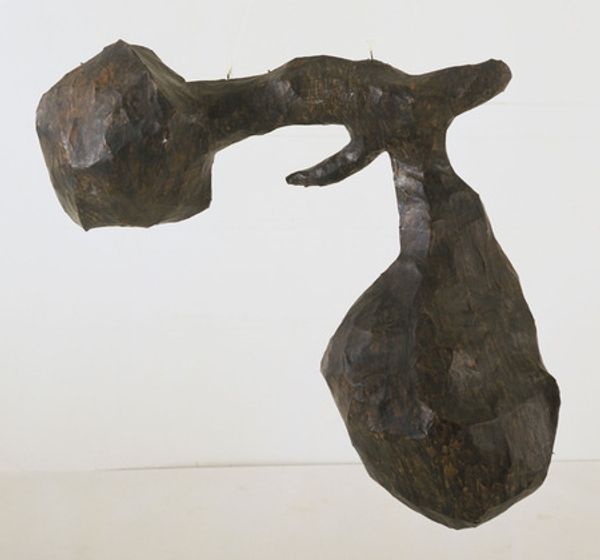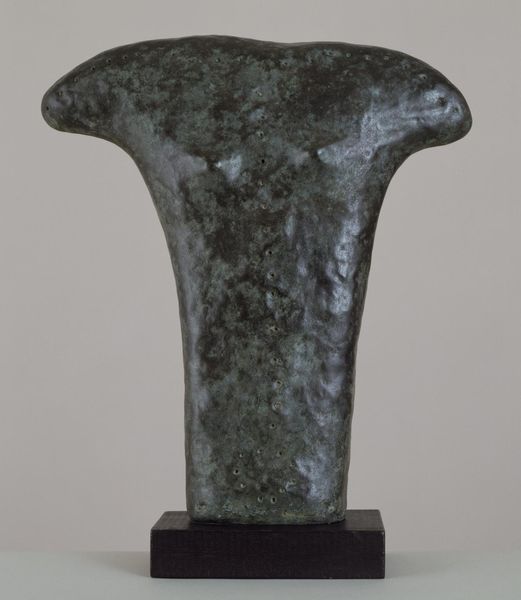
Dimensions: object: 830 x 1135 x 355 mm
Copyright: © Bowness, Hepworth Estate | CC-BY-NC-ND 4.0 DEED, Photo: Tate
'I had ... become bewitched by the Atlantic beach. The form I call Porthmeor is the ebb and flow of the Atlantic.' This is ‘Sea Form (Porthmeor)’ by the English sculptor Dame Barbara Hepworth (1903-1975). Cast in 1958, it’s one free-standing form with three circular holes. The sculpture extends horizontally (known as ‘diagonal emphasis’). Does it remind you of anything? To me, it looks similar to a seashell that has washed onto the shore of a pebbly beach. The surface is mostly smooth, though there are several areas of rough texture. It’s green, grey, and white in colour – three shades that we associate with the crashing waves. This is further supported by the energetic dappling across the surface. I can almost hear the roar of the sea! Together, these features create a natural and organic impression. It’s almost as if the piece has just been unearthed from the bottom of the ocean. Yet ‘Porthmeor’ was carefully crafted from bronze and placed on a wooden base. Hepworth took inspiration from the coastline and cliffs on the Penwith Peninsula near St Ives, Cornwall. The rugged landscape was close to her studio, which was a hub for the artists belonging to the St Ives School during the Second World War. Tragically, she would eventually die in her studio due to a fire in 1975. Why do you think so many artists turn to nature for inspiration? Are there any locations or landscapes that speak to you personally?
Comments
tate 8 months ago
⋮
http://www.tate.org.uk/art/artworks/hepworth-sea-form-porthmeor-t00957
Join the conversation
Join millions of artists and users on Artera today and experience the ultimate creative platform.
tate 8 months ago
⋮
Porthmeor is a beach close to Hepworth’s studio in St Ives, Cornwall. A critic thought this sculpture ‘seems to belong to the living world of the sea.’ The curling top lip of the bronze is like a representation of a breaking wave while the green and white patina of the inner surface recalls the colour of the sea and surf. At Porthmeor, Hepworth observed the changing tide, the movement of sand and wind, and the footprints of people and birds. For her, the rhythm of the tides was part of a natural order to which humankind also belongs. Gallery label, September 2016
